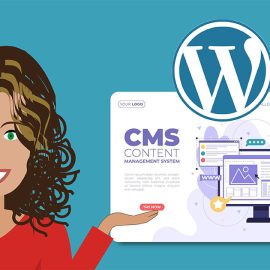
10 Things to Check Before Launching Your Website
When launching your website, you can often forget a number of things in your eagerness to make it live. Even a small mistake can alter the way people view your website and the products associated with it. Therefore, it’s useful to have a checklist to look through as you make your final touches and before you announce your website to the world.
Here are 10 important and necessary checks before your website’s official launch.
1. Titles and metadata
Your page title is not only important for SEO purposes, but also because it offers future visitors a first glimpse of what’s on the page. So set a different meta title for each page before you launch, making sure each meta title relates to the page’s content.
Also include metadata, such as descriptions or tags. While they aren’t as important as the meta titles when it comes to SEO, a decent meta description will invite more users to check out a given page, and by tagging it properly, you are making it easier to find.
Change the description on each page to make it relate to that page’s content, because this is often what Google displays in its search result description.
2. Cross browser check
It’s important that your website works across numerous browsers. It doesn’t have to be pixel perfect on all browsers, but everything should work and the user shouldn’t see any problems. The most popular browsers to check are Chrome, Opera, Microsoft Edge and Firefox.
3. Proofread
Read everything. Even if you’ve already read it, read it again. Get someone else to read it. There’s always something you’ll pick up on and have to change.
See if you can reduce the amount of text by keeping it specific. Break up large text blocks into shorter paragraphs. Add clear headings throughout and use lists so that users can scan easily.
4. Check all links
Don’t just assume all your links work. Click on them. Make sure your logo links to the homepage, a common convention.
Also, think about how your links work. Is it obvious to new users that they are links? They should stand out from the other text on the page. Don’t underline text that isn’t a link because it will confuse users.
And what happens to visited links? Βoth internal and external links are vital, because successfully linking your page to a trusted partner domain may help you get thousands of customers.
Use W3C Link Checker to check your website’s links and anchors.
5. Test functionality
The ease with which a user can navigate your website is pivotal. Test everything thoroughly. If you have a contact form, test it and copy yourself so that you can see what comes through.
Get others to test your website, and not just family and friends, but the website’s target market. Sit back and watch how a user uses the website. It’s amazing what you’ll pick up on when others use your website differently than how you assume they’d use it.
Common things to check for are contact forms, search functions, shopping baskets and log-in areas.
6. Validation
Before you launch, get your website’s code HTML validated, according to standards set by the Wide Web Consortium. You should aim for a 100% valid website. If yours does not pass muster, this could mean that there are some serious issues and so it’s up to you to search and fix them.
Keep in mind that not getting validated doesn’t mean you won’t be able to launch, but it may indicate there are various problems that can potentially drag the user experience down. Common gotchas include no alt tags, no closing tags and using “&” instead of “&” for ampersands.
Use W3C Validator to check your website’s markup code.
7. Analytics
Installing some sort of analytics tool is important to help measure important stats like unique visitors, conversion and page views. It also notifies you when the numbers start going down.
Google Analytics is the most popular free tool.
8. Include a sitemap
Adding a sitemap.xml file to your root directory allows the major search engines to easily index your website. The file points crawlers to all the pages on your website. Τools such as XML-Sitemaps automatically creates a sitemap.xml file for you. After creating the file, upload it to your root directory.
If you use WordPress, install the Google XML Sitemaps plugin, which automatically updates the sitemap when you create new content.
9. Defensive design
The most commonly overlooked element is the 404 page. If a user requests a page that doesn’t exist, your 404 page is displayed. This may happen for a variety of reasons, including another website linking to a page that doesn’t exist.
Get your users back on track by providing a useful 404 page that directs them to the homepage or suggests other pages they may be interested in.
Another defensive design technique is checking your forms for validation. Try submitting unusual information in your form fields (e.g. lots of characters, letters in number fields, etc.) and make sure that if there is an error, the user is provided with enough feedback to be able to fix it.
10. Optimal performance
Optimisation is crucial and will allow your website to place higher on search engine results, attract a new audience and simply work properly. You’ll want to configure your website for optimal performance. You should do this on an ongoing basis after launch, but you can take a few simple steps before launch, as well.
Reducing HTTP requests, using CSS sprites wherever possible, optimising images for the web, compressing JavaScript and CSS files and so on, can all help load your pages faster and use less server resources.
If you are using WordPress, you may need to consider useful caching techniques to speed up the performance.
BONUS TIP – Backup
If your website runs off a database, you need a backup strategy, or else the day will come when you regret not having one. If you use WordPress, there are plenty of plugins to choose from to automatically back up your website.
SOURCE: Smashing Magazine
Need a professional looking website?



